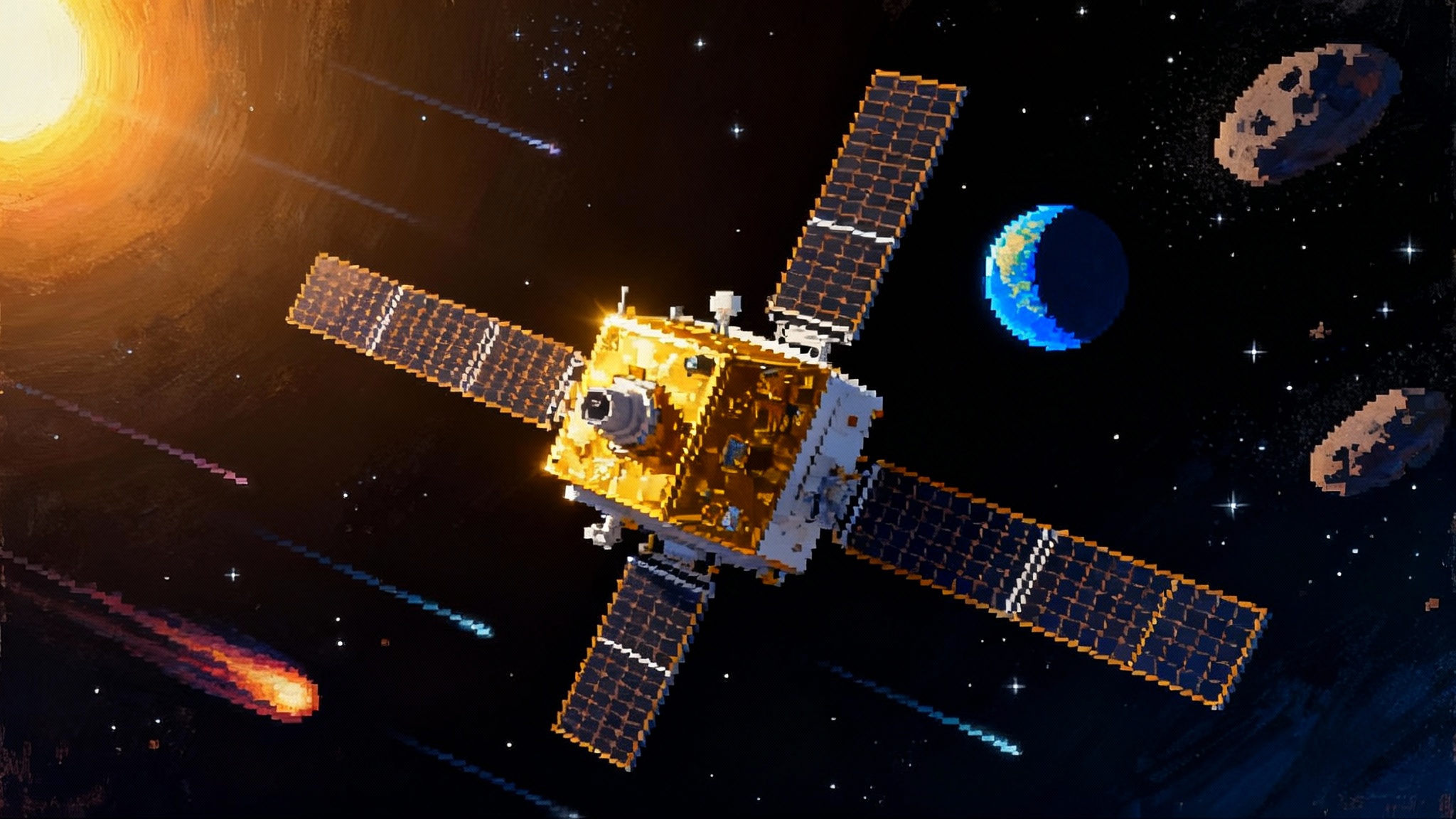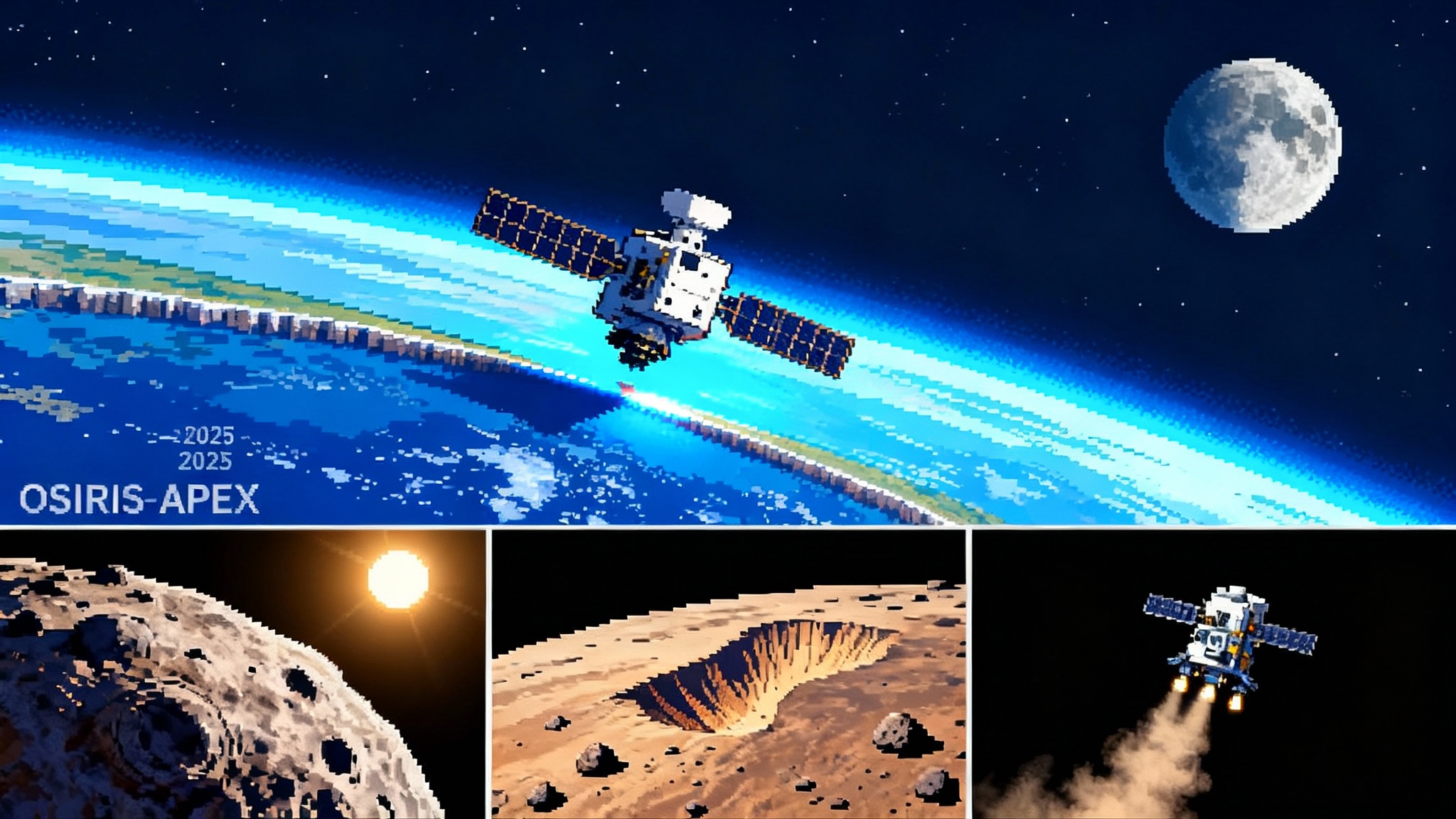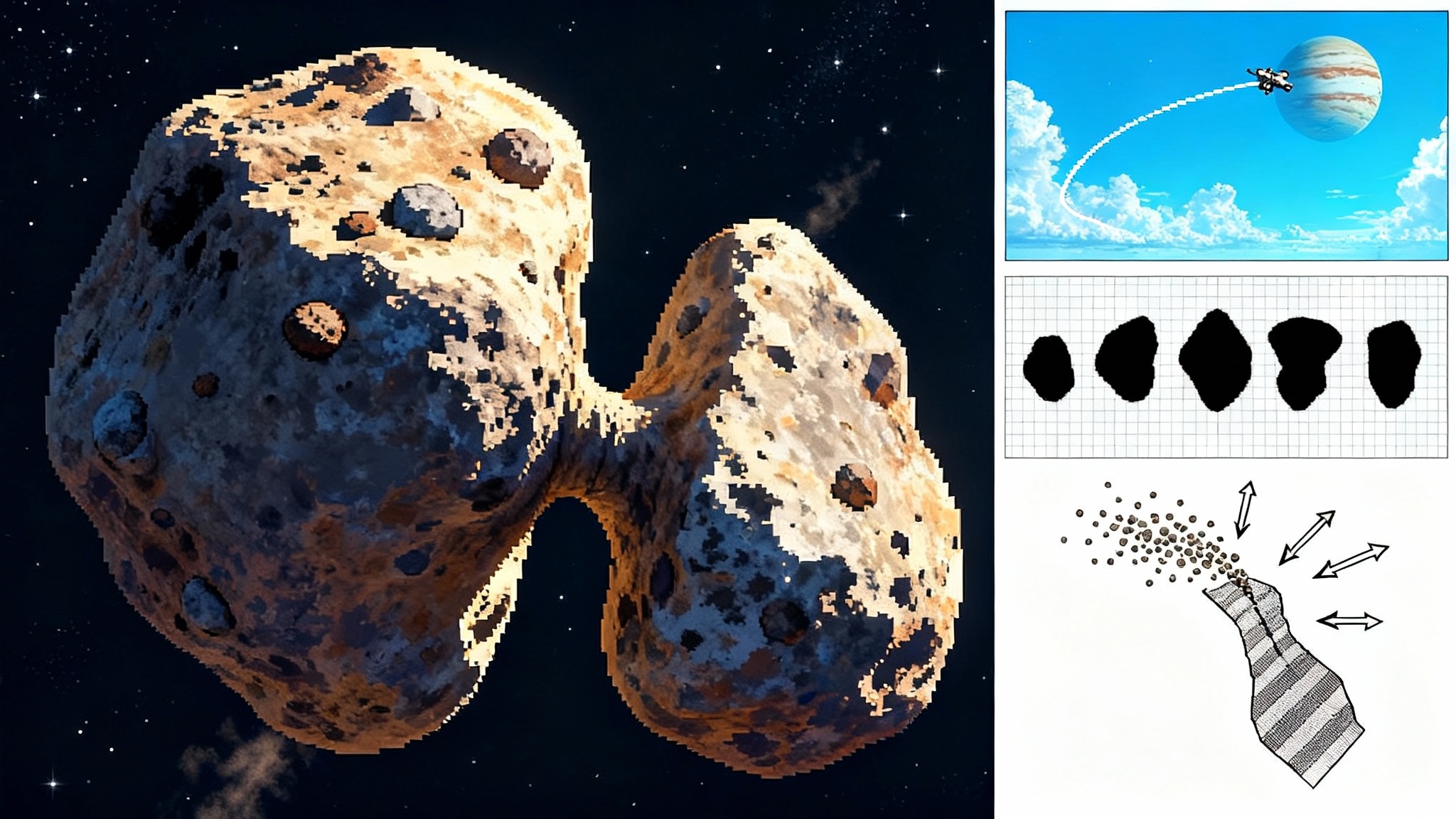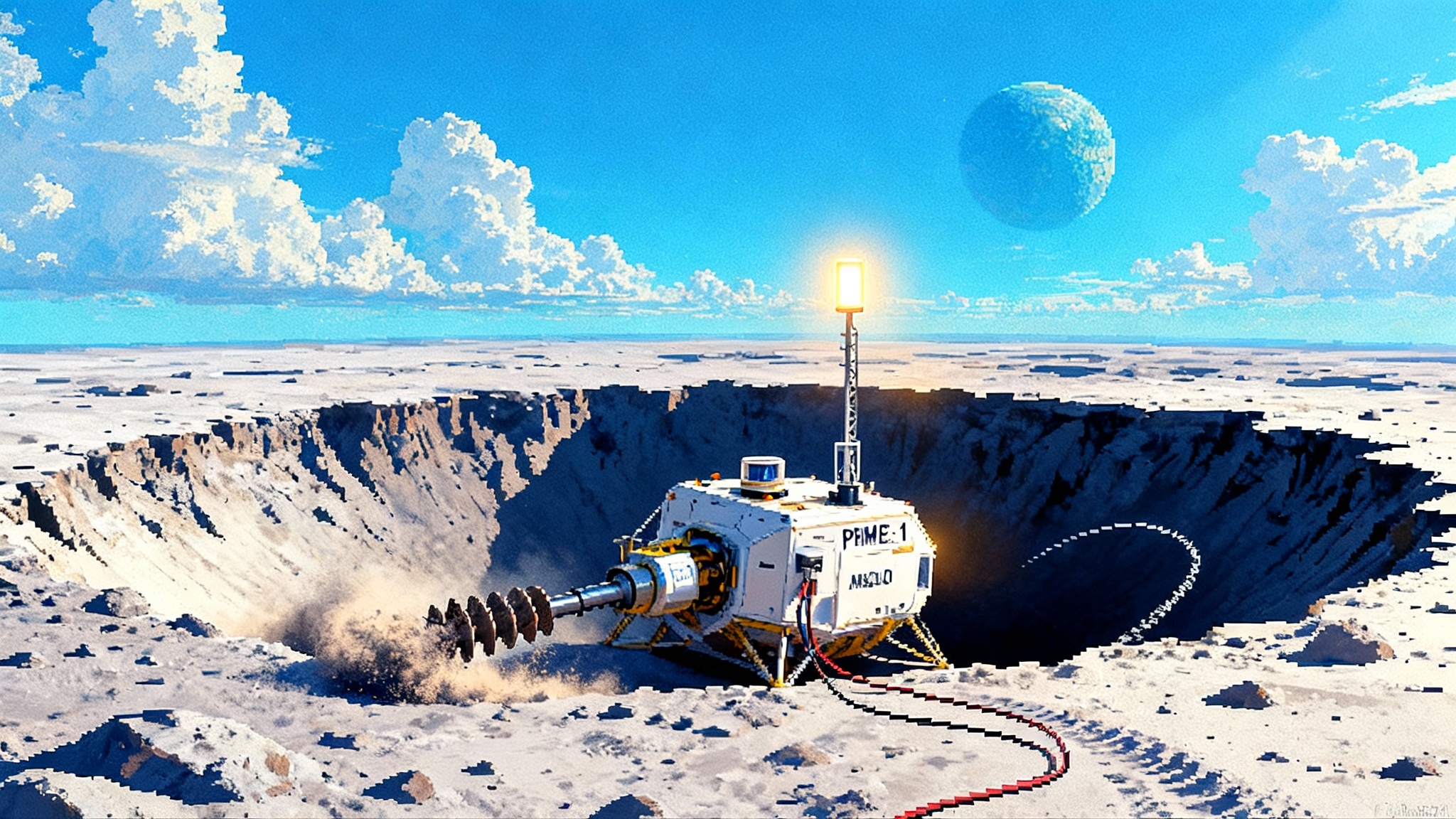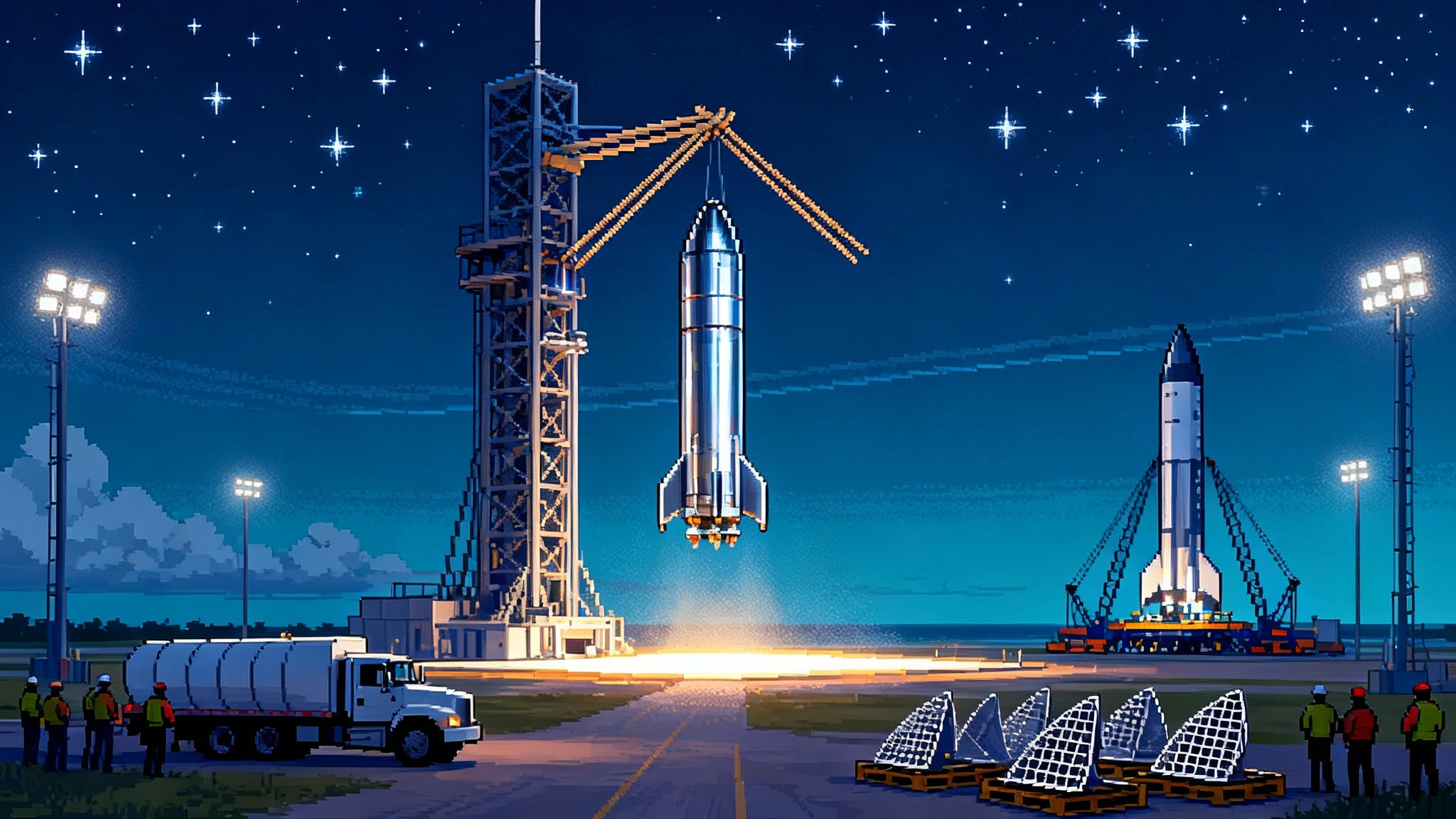China’s Tianwen‑2 Is Sampling a Quasi‑Moon, Then 311P
Launched in May 2025, China’s Tianwen‑2 is on course to sample Earth’s quasi‑moon Kamoʻoalewa, then use an Earth swingby to set up a second act at active asteroid 311P. One spacecraft, two targets, a faster, cheaper deep‑space playbook.
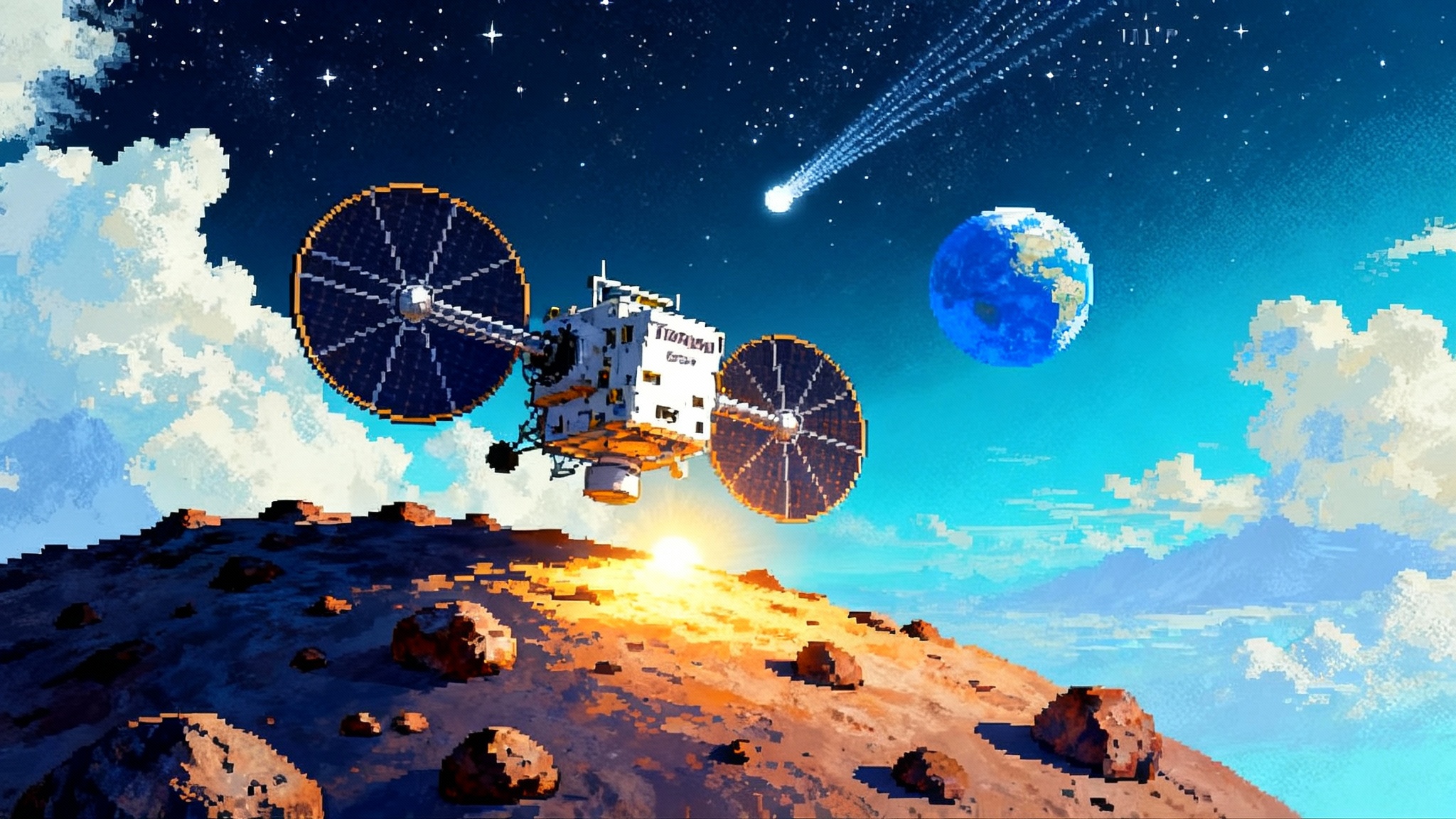
A two‑stop deep‑space mission shifts into high gear
China’s Tianwen‑2 left Earth at the end of May 2025 on a Long March 3B rocket and quickly began checking off cruise milestones. Within the first week the spacecraft transmitted its first in‑flight image, confirming healthy systems. A month later the China National Space Administration shared new pictures of Earth and the Moon and noted the vehicle had already cruised more than ten million kilometers, a clean sign that navigation, communications, and power were behaving as designed. CNSA released Earth and moon images. As of early October 2025, Tianwen‑2 remains in interplanetary cruise on a transfer trajectory that sets up for a mid‑2026 rendezvous with a target you can think of as a cosmic pace car: Earth’s quasi‑moon Kamoʻoalewa.
What makes this mission a breakthrough is not only the destination. It is the architecture. Tianwen‑2 is designed to collect a sample from Kamoʻoalewa, deliver that sample to Earth in 2027, and then keep going. After the sample capsule separates for reentry, the main spacecraft uses Earth’s gravity to bend its path toward an entirely different world, the active asteroid 311P. One launch, two very different small bodies, two distinct science payoffs. It is a multi‑stage itinerary that looks more like a clever logistics plan than a single‑target flagship.
Why a “quasi‑moon” matters
Kamoʻoalewa is not a true satellite like the Moon. It is a small near‑Earth asteroid that orbits the Sun in almost the same period as Earth and stays in a 1:1 resonance, which makes it appear to loop around our planet every year. From Earth’s point of view, it is a quiet companion that never strays far, which is why dynamics specialists call it a quasi‑satellite. Estimates place its size at roughly 40 to 100 meters across. Telescopic observations indicate it spins very fast and reflects light in a way that looks surprisingly lunar.
That lunar hint fuels the leading hypothesis about its origin. Some researchers argue Kamoʻoalewa may be a shard of the Moon ejected by an ancient impact and later shepherded into its current resonance with Earth. If true, the asteroid is a time capsule of lunar crust and regolith that was knocked free, exposed to space weathering, and migrated into this unusual orbit. A returned core of material would let labs test that idea directly with mineral fingerprints and isotopes that are diagnostic of lunar rock. Think of it as a blood test for a family relationship. If the oxygen isotope ratios, trace elements, and mineral textures match known lunar samples, we would have a near‑certain answer.
Even a refutation would be valuable. If Kamoʻoalewa turns out to be ordinary basaltic asteroid material that only mimics lunar color, that too will refine how astronomers interpret remote spectra and color indices when ground truth is missing. Either way, sample in hand is the difference between guessing and knowing.
How Tianwen‑2 plans to grab grains that barely stick together
Sampling a 50‑meter‑class body is more like interacting with a cloud of rubble than landing on a planet. Gravity on Kamoʻoalewa is so weak that a human could hop free with a firm push. That makes surface operations tricky. Rotational speed and seismic jostling from impacts can loft grains, which is why engineers add redundant techniques.
Tianwen‑2 carries two complementary methods. The first is a touch‑and‑go maneuver, where the spacecraft dips to the surface and uses a sampling head to ingest loose regolith in a quick contact. This technique worked for NASA’s OSIRIS‑REx at Bennu and for Japan’s Hayabusa2 at Ryugu, and it continues as OSIRIS‑APEX sets up Apophis reality test. The second is an attach‑and‑anchor approach, in which mechanical arms or feet grab and stabilize against the surface while drills or corers bite into material that is not freely floating. By combining both, mission planners hedge against surprises in grain size, cohesion, or crust strength. The target sample mass is about one hundred grams, enough to distribute to global labs for years of work.
Because Kamoʻoalewa is small and fast‑spinning, Tianwen‑2 will spend months mapping before the first attempt. Cameras, spectrometers, a dust environment sensor, and a small magnetometer will build a high‑resolution atlas of the surface and its immediate environment. Imagine a survey crew pacing a windswept sand bar that shifts underfoot; you do not rush the first shovel. The team will look for boulder fields, smooth ponds of fine material, and places where the surface texture hints at minimal clumping. They will also track how sunlight and shadows change thermal conditions hour by hour, because temperature swings can clamp or loosen grains.
Planetary‑defense dividends hidden in a small bag of dirt
Kamoʻoalewa is not hazardous, but its properties echo those of many near‑Earth objects that are. A sample return paired with pre‑sampling surface data gives modelers the stuff they crave to sharpen risk assessments and mitigation concepts.
- Cohesion and porosity: How grains stick and how much empty space is inside tell us whether a kinetic impactor would punch deep and be absorbed or scatter debris efficiently. Lab tests on returned grains let teams set realistic ranges instead of broad guesses. See how pipeline capabilities mature in NEO Surveyor clears CDR milestone.
- Thermal inertia and the Yarkovsky effect: Dark boulders warm in sunlight and re‑radiate heat, generating a tiny thrust that can gradually alter an asteroid’s orbit. Measuring thermal properties up close and matching that to a real sample locks down the constants in these models.
- Spin state and shedding: Fast rotation can fling fines and pebbles off a body, feeding dust tails or changing shape over time. If Kamoʻoalewa shows evidence of recent shedding, those observations inform how spin‑up by light pressure can evolve small bodies that drift near Earth.
With these parameters better pinned down, planetary‑defense simulations become more predictive. That means more reliable warning timelines, more confident decisions on whether to nudge, tug, or simply monitor a future object.
After the drop‑off, the chase to an “active” asteroid
Once Tianwen‑2 delivers the sample return capsule to Earth in 2027, the main spacecraft will continue to the main belt to meet 311P, an asteroid famous for sprouting multiple dust tails. Unlike classic comets, which vent gas and dust from ice, 311P appears to shed material because of rapid rotation and landslides that roll downslope and escape. This is geology at micro‑gravity scale. By pairing a quasi‑moon sample with a visit to an active asteroid, the mission spans two key processes that shape small bodies: impact history and rotational reshaping.
The second leg also demonstrates an important programmatic lesson. A modern deep‑space bus can be reprovisioned in flight. After one science objective is complete, propellant, power, and navigation can be reallocated to a new target. The result is more science per launch and a shorter wait between first results and the next headline.
The competitive ripple: pressure on the United States to hurry up Mars samples
The moment Tianwen‑2’s capsule lands in Inner Mongolia in 2027, pressure will intensify on the United States to prove that it can return Mars samples on a reasonable schedule and budget. NASA has already acknowledged that the original Mars Sample Return plan was too expensive and too slow. In 2024 the agency said it would seek innovative designs that cost less and deliver samples in the 2030s instead of 2040, and it invited industry to propose alternatives. NASA seeks innovative designs.
What does Tianwen‑2 have to do with Mars? Not much technically, but a lot strategically. It shows that multi‑stage, agile missions that reuse the same spacecraft for sequential goals can deliver faster return on investment and fresher science. If NASA wants to keep pace in sample science, especially while balancing Artemis and Earth science, it will need to apply the same playbook: modular hardware, staged objectives, and partnership with commercial providers who can move hardware to the pad quickly. For a taste of the Moon‑first strategy that underpins Artemis, see our look at the Artemis lunar south pole rover.
The Kamoʻoalewa sample: what labs will look for first
When a small sealed canister of grains and fragments arrives on Earth, curators will split material among gloveboxes and micro‑clean labs with a triage plan. Here is what will likely hit the front of the queue.
- Mineralogy at the grain scale: If plagioclase, pyroxene, and olivine appear in proportions and textures that match lunar basalt or breccia, the lunar‑ejecta hypothesis moves to the top of the stack. Shock veins, melt spherules, and agglutinates are smoking guns for violent ejection and surface gardening by micrometeorites.
- Volatile inventory: Even a small trace of trapped gases or hydroxyl signatures matters. If the sample looks bone‑dry and space‑weathered, that supports a long residence time far from water ice. If it shows unexpected volatiles, it complicates the origin story and helps calibrate remote‑sensing biases.
- Space weathering rinds: The thickness and chemistry of nanophase iron and vapor‑deposited layers on grain surfaces reveal how long the material has been exposed to solar wind and micrometeoroid bombardment, and whether the object has been resurfaced recently by landslides.
With results in hand, modelers will reconcile lab data with the in‑situ maps and spectra that Tianwen‑2 collected before sampling. That closed loop, measurement to sample, is what turns a mission into a reference point for decades.
A template for agile exploration
Tianwen‑2’s two‑target architecture is not a one‑off stunt. It offers a clear set of tactics that any agency or company can adopt.
- Stack objectives: Design a mission to complete one high‑value goal early, then flow the remaining resources into a second goal that stretches the science.
- Keep the bus common: Use a versatile spacecraft platform and common instruments so operations teams gain experience once and reuse it. That reduces risk on the second leg.
- Mix sampling methods: Combine touch‑and‑go for loose material with anchoring or coring for consolidated crusts. Build in the option to try again.
- Exploit gravity assists: Plan an Earth or Venus swingby after the first objective to add energy and change direction without a new launch.
- Publish early, publish often: Release images and checkpoints quickly to show progress and keep political risk low. It buys patience for the longer second act.
These are not exotic ideas. They are the practical tools of good systems engineering applied with discipline.
What to watch next
- Late 2025: Navigation updates and cruise checks. Look for periodic status reports on attitude control and camera health.
- Mid 2026: Rendezvous and proximity operations begin. Expect months of mapping to characterize spin, surface roughness, and dust environment.
- 2026 to early 2027: Sampling attempts. A successful touch‑and‑go or anchor‑and‑attach sequence will be the headline moment.
- 2027: Sample capsule delivery to Earth with helicopter or ground recovery and transfer to a curation facility. The main spacecraft sets up its Earth gravity assist for the second leg.
- Early 2030s: Cruise to 311P continues, with first approach images long before close study in the mid‑2030s.
The bigger shift
There is a reason this mission feels like a breakthrough. It compresses the cycle from launch to first science, and then refuses to stop. It picks a tiny nearby target that is scientifically rich and operationally manageable, and it couples that success to a stretch goal that extends the same hardware’s life. It is a pragmatic response to the budget and schedule realities that every space program faces.
If Tianwen‑2 brings home a handful of grains that prove Kamoʻoalewa is lunar ejecta, it will close a long‑running debate. If it does not, it will still arm planetary‑defense teams with better constants and shine light on how small worlds evolve under sunlight and spin. Then it will aim at 311P and show how to wring more science from the same investment. That is the story here. Agility over excess. Sequencing over perfection. Missions designed to keep moving.
The next 24 to 36 months will test whether that story becomes the norm. Watch the updates from a small spacecraft between Earth and a quasi‑moon. They are signposts toward a faster, cheaper, and more resilient era of exploration.
